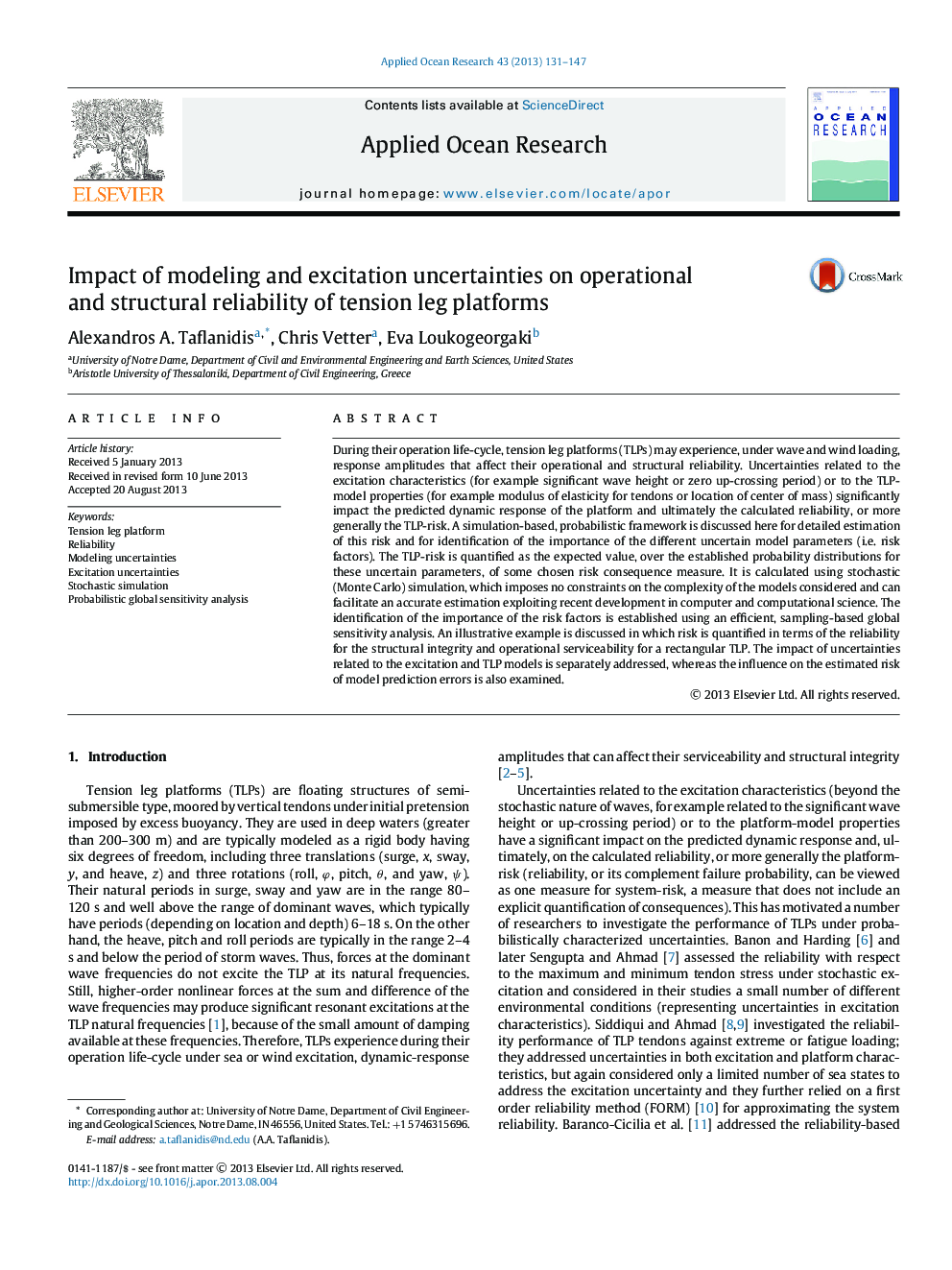| Article ID | Journal | Published Year | Pages | File Type |
|---|---|---|---|---|
| 1720116 | Applied Ocean Research | 2013 | 17 Pages |
•Estimation of TLP risk and identification of the importance of risk factors are discussed.•Basis of the approach is a probabilistic characterization of all sources of uncertainty.•Uncertainties related to the excitation and TLP models are separately addressed.•The influence on the estimated risk of model prediction errors is also examined.•Computational approach relies on stochastic-simulation and stochastic sampling.
During their operation life-cycle, tension leg platforms (TLPs) may experience, under wave and wind loading, response amplitudes that affect their operational and structural reliability. Uncertainties related to the excitation characteristics (for example significant wave height or zero up-crossing period) or to the TLP-model properties (for example modulus of elasticity for tendons or location of center of mass) significantly impact the predicted dynamic response of the platform and ultimately the calculated reliability, or more generally the TLP-risk. A simulation-based, probabilistic framework is discussed here for detailed estimation of this risk and for identification of the importance of the different uncertain model parameters (i.e. risk factors). The TLP-risk is quantified as the expected value, over the established probability distributions for these uncertain parameters, of some chosen risk consequence measure. It is calculated using stochastic (Monte Carlo) simulation, which imposes no constraints on the complexity of the models considered and can facilitate an accurate estimation exploiting recent development in computer and computational science. The identification of the importance of the risk factors is established using an efficient, sampling-based global sensitivity analysis. An illustrative example is discussed in which risk is quantified in terms of the reliability for the structural integrity and operational serviceability for a rectangular TLP. The impact of uncertainties related to the excitation and TLP models is separately addressed, whereas the influence on the estimated risk of model prediction errors is also examined.
